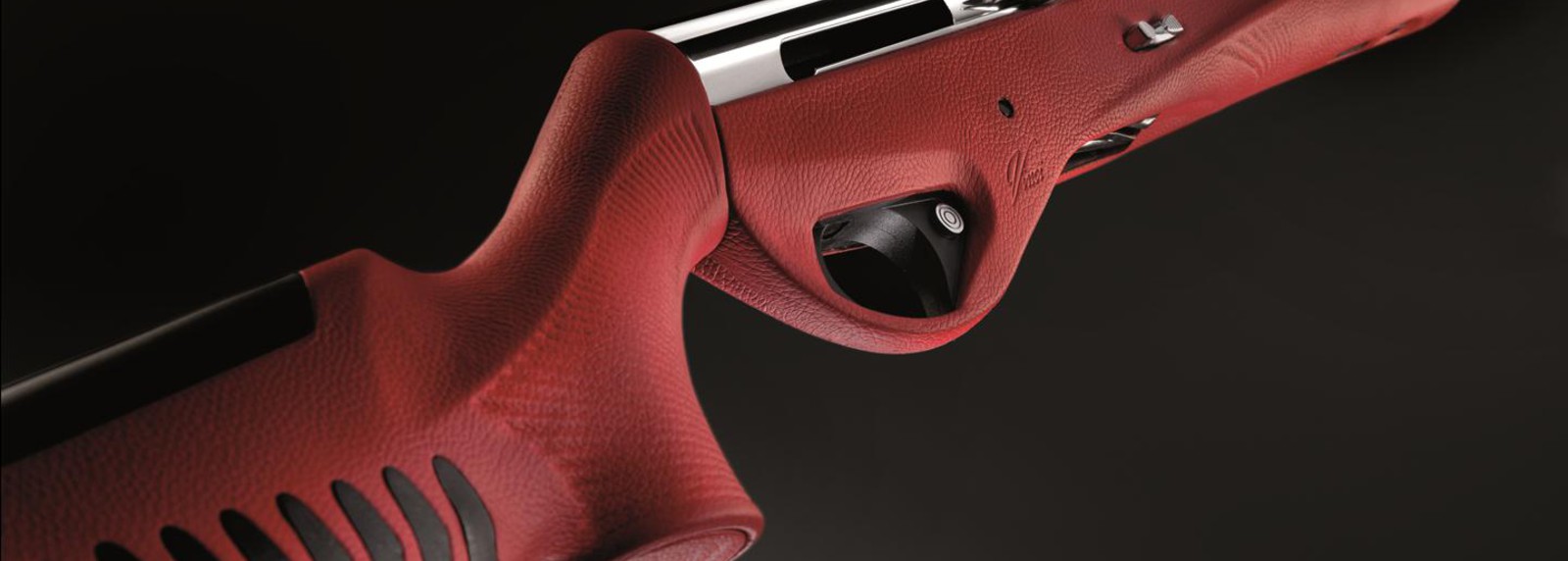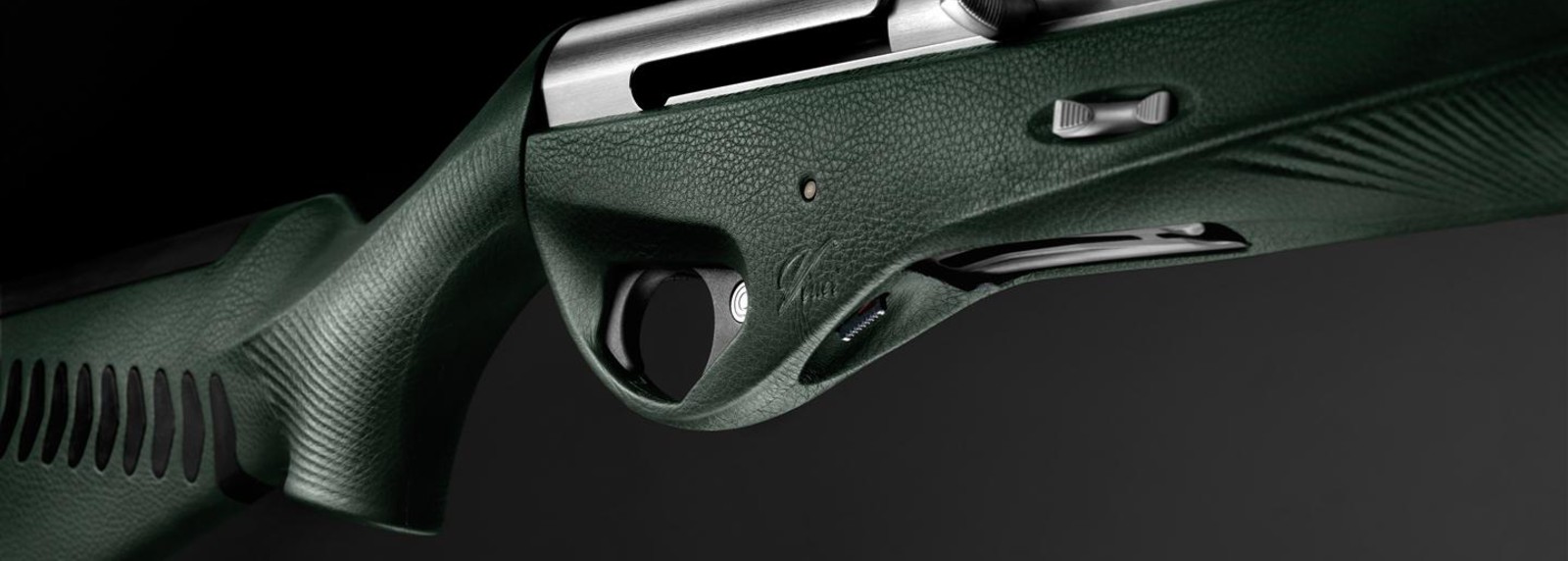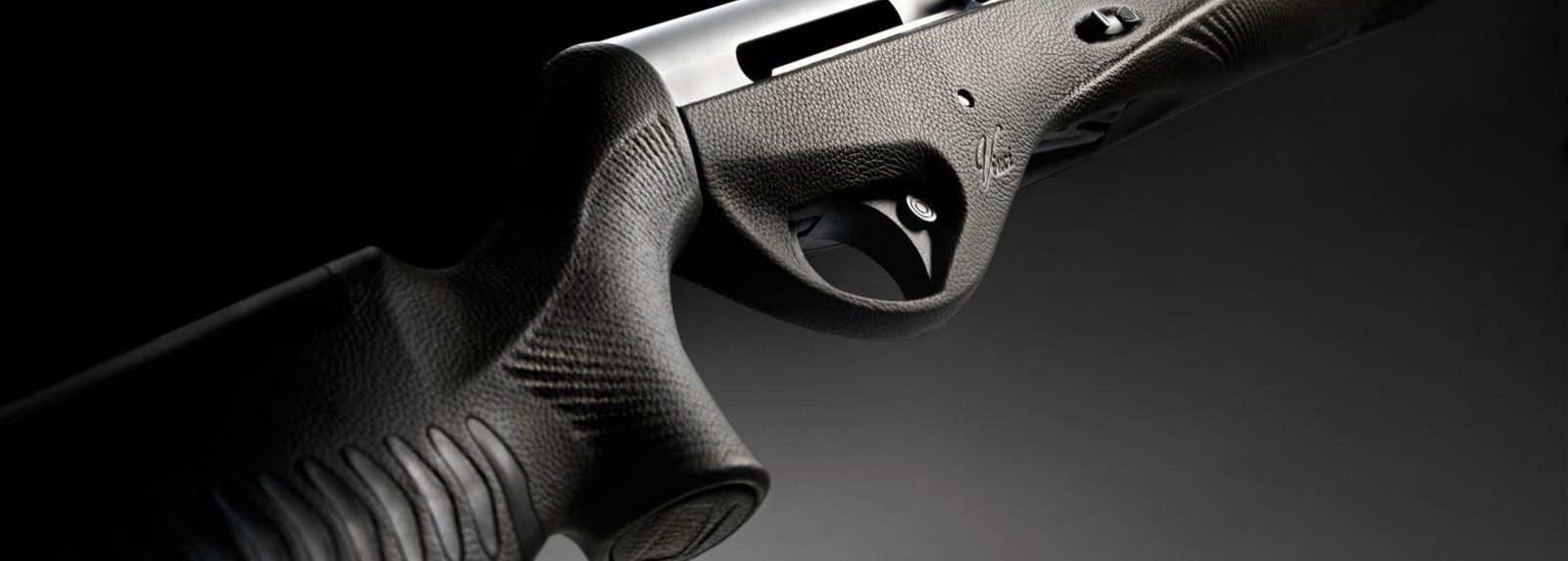Provocations - Stylistic hallmarks
Great innovations, when not outright revolutions, are the life and soul of Benelli
The Benelli story is not one of technical innovation alone. Benelli has always been dedicated to the creation of new form as well new content. Over the years our company has laid a number of milestones in shotgun design, all unique and timeless hallmarks of style. Like the 121, the inspirational model that went on to form the basis for the Raffaello and Lord. The Lord itself was Benelli’s first prestige shotgun, a masterpiece in its own right rather than a mere canvas for future embellishment, featuring original colours and a leather-adorned receiver and stock.
The Vinci has been acclaimed as the technological pinnacle of hunting shotguns. It’s unique design owes very little to the technical elements of any previous semiautomatic shotgun. On the contrary, the Vinci embodies a totally new approach to shotgun design and styling. In the Vinci, form cannot be separated from function: lines that seem to have been sculpted by the wind are also the result of an intelligent combination of ergonomics and functionality. The Vinci is not just a new shotgun: it is a completely new concept in shotguns.
The Lord and the Vinci are the results of Benelli’s unique know-how and technology, but also expressions of our pride in state-of-the-art creations and our commitment to innovation as a means of satisfying the declared and secret desires of our customers. Creating something new demands a spirit of discovery, courage to blaze new trails through largely unknown territory, courage to take risks with the future and with ideas and, to a certain extent, courage to provoke.
Provocation and trailblazing are the driving forces behind the creation of any concept gun. For 2011, we have continued our quest for new directions and our provocation of the market by adding new to new and mixing the stylistic hallmarks of the Lord and the Vinci. Whereas the Lord was inspired by the Raffaello, a model based on well-established and by now almost traditional lines, the Vinci is all-new inside and out. Injecting further innovation to an already revolutionary design seemed exactly the sort of challenge and provocation we wanted: a step in the direction of advanced technology taken by Italian master craftsmen.
But at Benelli, we wanted more. We have always been attentive to environmental issues, so we wanted our 2011 concept guns to bear witness to our commitment to a cleaner and better world. (Benelli’s Environmental Management System has been ISO 14001 certified since 2006.) The processes, materials and finishes we used to create our 2011 concept guns were therefore all selected to reduce environmental impact to a minimum. All polymer parts of our 2011 concept guns are made from Rilsan, a polyamide material obtained from castor beans – a renewable resource of the type we always try to use at Benelli, and fully covered in prestige, full-grain leather that has been ecologically tanned without recourse to heavy metals or environmentally harmful chemicals. Smooth steel parts are finished in satin or matt, or feature a new gloss finish obtained by an experimental trivalent chromium plating process that satisfies the latest safety and environmental standards and is also more resistant to wear and oxidation.
The differences between our three Vinci-based concepts (Vinci Leather Green, Vinci Leather Grey, and Vinci Leather Red) lie in the chromatic effects created by the different finishes (matt or gloss) of the barrel and receiver and by the different colour leathers.
The fox in Saint-Exupéry’s Little Prince was right! To see clearly, you have to look with your heart. The truth is invisible to the eyes. The same applies to these guns. Look at them with your eyes alone and you will see only beautifully crafted, original shotguns with innovative styling. But look with your heart and you will appreciate the hard work, the commitment, the expertise, and the desire to excel and to innovate that lies behind them. Though we might not be entirely impartial, we believe we have done a fine job and that our efforts will be pleasing to the eyes of those who, like us, look with the heart.
Trivalent chromium
Chromium is a hard, glossy, steely-grey metal. It is easy to polish, difficult to melt and extremely resistant to corrosion. Its chemical symbol is Cr, its atomic number is 24 and its atomic mass 52.01. Chromium is a typical transition metal and as such has several oxidation states: +2, +3, +4, +5, +6, associated with different coloured salts (hence the name, derived from the Greek word “chromos”, meaning “colour”.) Oxidation states +4 and +5 are quite rare. State +3 is the most stable while chromium +6 compounds (hexavalent chromium) are powerful oxidants. The toxic and carcinogenic effects of hexavalent chromium are mainly due to this property, which makes it highly aggressive to biological systems. On the other hand, there is an ongoing debate about whether trivalent chromium is an essential oligo-element for enhancing the human body’s sugar metabolising system. Metal chromium and trivalent chromium compounds are not normally considered hazardous to health, but hexavalent chromium compounds are carcinogenic and extremely harmful if ingested or inhaled in fumes.
As chromium compounds have been (and still are) used in colours, paints and for leather tanning, many of them are now found in the soil and underground water of disused industrial sites. Such sites need decontamination and environmental reclamation as a result. Benelli has always been attentive to the needs of the environment and has long implemented water and fume filtering and cleaning systems to ensure that no hexavalent chromium or other hazardous substance is released into the environment. European Parliament and Council Directive 2002/95/EC (the RoHS directive) has forbidden the use of hexavalent chromium in anti-corrosion coatings for electrical and electronic appliances since July 1st, 2006. Chromium plating is also applied for decorative effect on metals and alloys. Plating can be done using several methods. Besides protecting the surface against corrosion, it also provides a harder surface and reduces friction. Until very recently, chromium coatings on carbon iron alloys were applied using hexavalent chromium. It is only recently that new technologies have been developed to use trivalent chromium instead. The European directive does not apply to mechanical products, but Benelli has always been in the forefront on environmental issues and has begun the process of gradually eliminating all surface treatments that use hexavalent chromium.
The chrome plating on our 2011 concept guns is obtained from trivalent chromium using a brand new process that gives even better protection than that afforded by hexavalent chromium coatings. The new process also enhances the appearance of the plated products and forms a totally homogeneous surface that resists stains, burns and marks. The plating is attractive to the eye and smooth to the touch and ensures a lasting shine with no defects or porosity, even in areas that are difficult to reach, like recesses and tight corners.
Rilsan
A macromolecule is a molecule of very large dimensions, with a very high atomic mass. Macromolecules are common in living systems but also occur in synthetic and artificial polymers. Polymer macromolecules are typically made of many similar smaller molecules linked together in various sequences (from around 100 to over 1000 times): they can be linear, branched or network in form. According to IUPAC (the International Union of Pure and Applied Chemistry), the term macromolecule should be used exclusively to refer to large single molecules whereas the term polymer should be used to identify substances composed of several macromolecules.
Polyamides (PA) are macromolecules characterised by the CO-NH amide group, the group that gives them many of their characteristic properties. Polyamides can be divided into two types of material:
- Nylons: aliphatic and semi-aromatic polyamides
- Aramids (Kevlar and Nomex): aromatic polyamides
Many other types of polyamide can be obtained from the inter-reaction of different molecules capable of forming the necessary bonds.
Rilsan is a vegetable derived polyamide (obtained from castor beans). It does not absorb water and has excellent mechanical properties at all temperatures, including very low temperatures, as is typical of many polyamides. Rilsan is extremely resistant to impact (even at very low temperatures), as well as to abrasion, ageing and atmospheric agents. It is the only polyamide that can be used for contact with foods. Rilsan has many other important qualities too. It is highly resistant to traction, compression and impact, stable in humid and dry atmospheres, resistant to wear in dusty and harsh conditions and resistant to ageing, light, heat and low temperatures. It has a low coefficient of friction, a lower humidity absorption rate than any other polyamide, and good resistance to chemical products.
Despite Rilsan’s superior qualities and its non-hygroscopic behaviour in particular, its use is limited by its high cost. Its main applications lie in the aeronautical, marine and automotive industries and in machine tools, areas which appreciate its optimal mechanical characteristics under all humidity and temperature conditions.
 Benelli Belgium by BLIKI
Benelli Belgium by BLIKI

